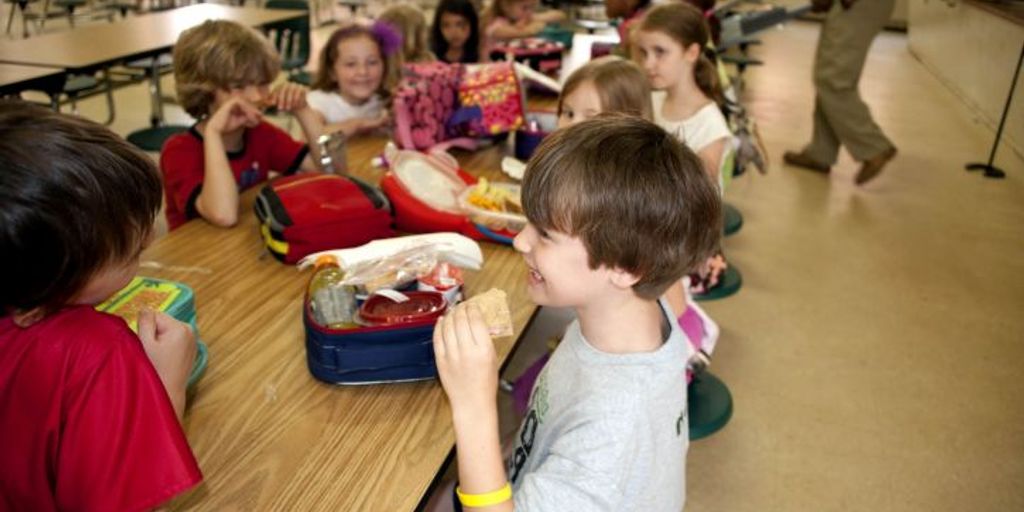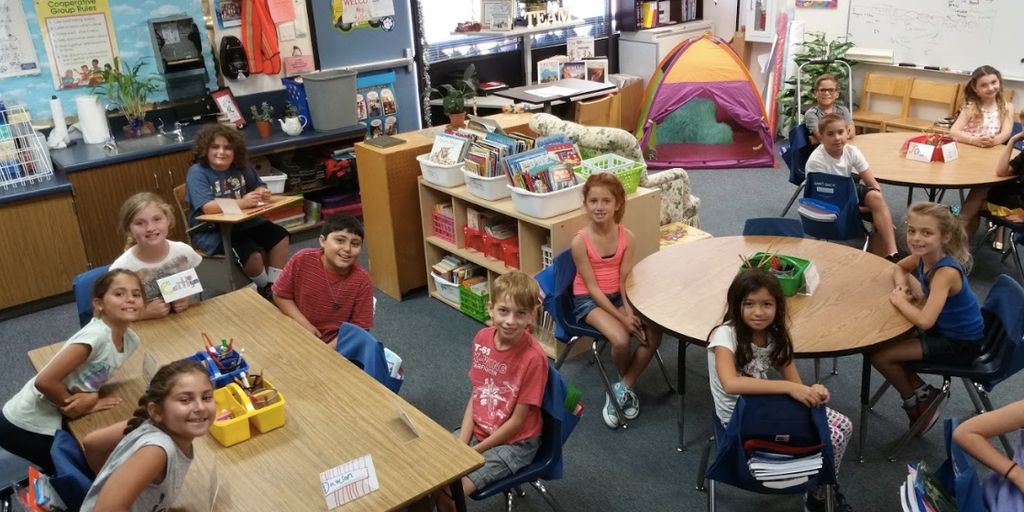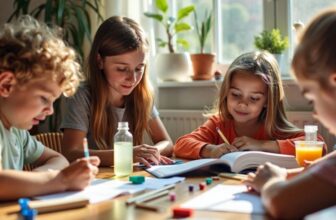
Parents and educators constantly seek effective ways to foster children’s development. The key to successful learning lies in making it engaging and enjoyable for children. By incorporating hands-on, creative, and interactive activities, you can spark a child’s interest and promote a lifelong love of learning. This article explores various educational activities designed to boost your child’s academic, motor, communication, and social-emotional skills.
Key Takeaways
- Hands-on activities such as science experiments can make learning an adventure and help children understand complex concepts through real-world applications.
- Creative arts and crafts allow children to express themselves while developing fine motor skills and exploring their creativity.
- Outdoor educational activities like nature scavenger hunts and gardening foster a connection with nature and promote physical activity.
- Interactive reading sessions can improve language skills and encourage a love for reading by making stories come alive through puppets and discussions.
- Mathematical games and puzzles enhance problem-solving skills and spatial awareness, making math fun and engaging.
Hands-On Science Experiments
Hands-on learning is a fantastic way to help children process information and spark their interest and imagination. Not only does hands-on learning help children process information, but it’s also a more enjoyable way to learn. Here are some engaging science experiments you can try with your child to make learning an adventure.
Exploring Chemical Reactions with Baking Soda and Vinegar
This classic experiment is a great way to introduce children to chemical reactions. You’ll need baking soda, vinegar, and a container. When you mix the baking soda and vinegar, you’ll see a fizzy reaction that will captivate your child’s attention.
Building a Volcano Model
Creating a volcano model is a fun and educational activity. Use clay or papier-mâché to build the volcano structure. Once it’s ready, you can use baking soda and vinegar to simulate an eruption. This activity not only teaches about volcanic eruptions but also involves problem-solving and creativity.
Understanding Density with Oil and Water
For this experiment, you’ll need oil, water, and food coloring. Fill a glass with water and add a few drops of food coloring. Then, slowly pour oil into the glass. You’ll observe that the oil floats on top of the water, demonstrating the concept of density.
These hands-on activities will not only help your child learn effectively but also give them positive and enjoyable experiences with learning.
Creative Arts and Crafts
Creative arts and crafts are a fantastic way to promote child creativity with art activities. These activities not only provide a fun outlet for children but also help in developing fine motor skills and self-expression. Here are some engaging ideas to get started:
Painting with Natural Materials
Encourage your child to explore the outdoors and collect natural materials like leaves, flowers, and pebbles. Use these items to create unique paintings. This activity helps children connect with nature while fostering their creativity.
Creating Collages from Recycled Items
Gather old magazines, newspapers, and other recyclable materials. Let your child cut out interesting shapes and images to create a collage. This not only promotes creativity but also teaches the importance of recycling and reusing materials.
Sculpting with Clay
Provide your child with some clay and let their imagination run wild. Sculpting with clay can be a therapeutic activity, allowing children to express their emotions and develop their fine motor skills. Display their creations proudly to boost their confidence.
Art activities are more than just fun—they can provide children with a powerful outlet for their emotions.
By incorporating these arts and crafts activities into your child’s routine, you can help them develop a love for creativity and self-expression.
Outdoor Educational Activities
Nature scavenger hunts are a fantastic way to get children excited about the outdoors. They can search for various items like leaves, rocks, and insects, which helps them learn about their environment. This activity is not only fun but also promotes physical development as children run, jump, and climb to find the items on their list.
Bird watching is a peaceful yet educational activity that can teach children about different bird species and their habitats. Equip your child with a pair of binoculars and a bird guidebook, and let them explore. This activity can also be a great way to practice patience and observation skills.
Gardening offers a hands-on experience that can teach children about plant biology and the importance of caring for the environment. From planting seeds to watering plants, children can learn the entire process of plant growth. This activity also provides an opportunity for sensory play, as children can feel the soil, smell the flowers, and see the plants grow.
Outdoor sensory activities are a great way for kids to interact with nature while engaging all of their senses, benefiting their health and development.
Interactive Reading Sessions
Interactive reading sessions are a wonderful way to engage your child and foster a love for books. These activities not only improve literacy skills but also enhance creativity and critical thinking.
Storytelling with Puppets
Using puppets during storytelling can make the experience more engaging and interactive. Encourage your child to use different voices for characters and even create their own stories. This activity helps in developing imagination and verbal skills.
Reading Aloud and Discussing Stories
Reading aloud to your child is a golden opportunity to introduce new words and concepts during reading time. Pause to explain unfamiliar terms or encourage your child to guess the meaning based on context. You can also ask questions about the story to improve comprehension and critical thinking.
Reread all your child’s comfort books. Kids love hearing the same book many times, and the repetition is actually beneficial to their developing literacy skills.
Creating Storyboards
Creating storyboards is a fun way to help your child understand the sequence of events in a story. You can use drawings, cut-outs, or even digital tools to create a visual representation of the story. This activity not only enhances comprehension but also allows your child to express their creativity.
Mathematical Games and Puzzles

Building with LEGO for Spatial Awareness
Building with LEGO is a fantastic way to enhance your child’s spatial awareness and problem-solving skills. Encourage them to follow instructions to create specific models or let their imagination run wild with free-building sessions. This activity not only improves their fine motor skills but also introduces basic engineering concepts.
Playing Board Games that Involve Counting
Board games are a fun and interactive way to teach children counting and basic arithmetic. Games like Chutes and Ladders, Monopoly, and Dominoes are excellent choices. These games also help in developing social skills such as turn-taking and sharing.
Solving Jigsaw Puzzles
Solving jigsaw puzzles is a great way to improve your child’s cognitive abilities. It enhances their problem-solving skills and helps them understand the concept of part-whole relationships. Start with simpler puzzles and gradually move to more complex ones to keep the challenge engaging.
Engaging in these activities can make learning math fun and interactive, fostering a love for the subject from an early age.
Music and Movement Activities
Dancing to Different Genres of Music
Dancing to various genres of music can be a fun and educational activity for children. It helps them develop strength, flexibility, and coordination. Engage your preschooler or toddler with fun music and movement activities! This not only stimulates their body but also their mind, making it an energizing and easy-to-do activity.
Creating Homemade Instruments
Creating homemade instruments can be a delightful way for children to explore music. Using everyday items, children can make drums, shakers, and more. This activity combines creativity with learning, as children discover how different materials produce different sounds.
Singing and Learning New Songs
Singing and learning new songs is a wonderful way to develop language and literacy skills. It also introduces basic mathematical concepts such as counting. Music and movement activities combine music with physical movement, which includes singing, dancing, playing instruments, and moving to the beat. This helps children develop rhythm and refine their listening skills.
Music and movement activities are essential for a child’s development, offering a blend of physical, cognitive, and emotional growth opportunities.
Social-Emotional Learning Activities
Role-Playing Different Scenarios
Role-playing is a fantastic way for children to understand and express their emotions. By acting out various scenarios, they can learn empathy and develop better communication skills. This activity can be done with family members or friends, making it both educational and fun.
Practicing Mindfulness and Relaxation Techniques
Mindfulness and relaxation techniques are essential for children to manage stress and anxiety. Teaching children how to breathe deeply and focus on the present moment can significantly improve their emotional well-being. Simple activities like guided meditation or yoga can be incorporated into their daily routine.
Sharing and Turn-Taking Games
Games that involve sharing and turn-taking are vital for developing social skills. These activities teach children the importance of patience and cooperation. Board games, card games, or even simple playground games can be excellent tools for this purpose.
Social-emotional learning activities are vital for students as they help them learn how to express emotions and feelings. Start with these activities today!
Technology and Coding for Kids
Learning Basic Coding with Apps
Introduce your child to the exciting world of coding and robotics for kids in 2024. Coding apps are a fantastic way to get started. These apps often use games and interactive challenges to teach fundamental coding concepts. Look for apps that are age-appropriate and engaging to keep your child interested.
Building Simple Robots
Building simple robots can be an incredibly rewarding experience for children. Kits are available that provide all the necessary components and instructions. This hands-on activity not only teaches coding but also enhances problem-solving skills and creativity. Encourage your child to experiment and learn from mistakes.
Exploring Educational Websites and Games
There are numerous educational websites and games designed to make learning fun. These platforms offer a variety of coding projects for kids, from basic programming to more advanced challenges. Make sure to explore different options to find the ones that best suit your child’s interests and skill level.
Give your child room for error and experimentation, and make learning an interactive conversation between the two of you. Provide opportunities for hands-on, personalized, and creative education, and you’ll be surprised how much their love of learning grows.
Conclusion
In conclusion, fostering your child’s development through educational activities is a rewarding journey that combines fun, creativity, and learning. By providing hands-on, engaging experiences, you can make learning an adventure and help your child develop a love for discovery. Encourage exploration through visits to museums, zoos, and libraries, and support their interests with relevant resources. Remember, the goal is to make learning enjoyable and interactive, allowing room for error and experimentation. By doing so, you not only enhance their academic skills but also nurture their social-emotional growth, communication abilities, and motor skills. Embrace this opportunity to connect with your child and watch as their curiosity and passion for learning flourish.
Frequently Asked Questions
How can I make learning fun for my child?
Try to find hands-on, engaging experiences for your child. Make learning an adventure. Check out the Growth Mindset Activity Kit for lots of fun growth mindset activities. Kids will practice creativity, problem-solving, and learning from mistakes. These experiences will help your child learn effectively and give them positive and enjoyable experiences with learning.
What can I do to spark my child’s interests?
Talk to your child about what they are doing, reading, watching, and learning. Expose them to different experiences like museums, theatrical performances, and zoos. Help them check out books on a variety of topics from the local library. These activities can help you find and spark your child’s interests.
What are some at-home activities to boost my child’s development?
There are many at-home learning activities parents can use to boost their child’s academic, motor, communication, and social-emotional skills. Adapted from some of the best books on early childhood development and education, these fun and inexpensive activities will keep kids learning and provide easy ways to connect with them.
How can I encourage my child to love learning?
Give your child room for error and experimentation, and make learning an interactive conversation between the two of you. Provide opportunities for hands-on, personalized, and creative education, and you’ll be surprised how much their love of learning grows.
What are some activities to help children learn through play?
Some top activities for helping children learn through play include sand play, water play, and other interactive experiences. These activities provide opportunities for scientific learning, developing self-confidence, physical development, teamwork, sharing, and social skills.
How can I support my child’s development during their first two years?
There are many playful activities to support your child’s development during their first two years. These activities can be enjoyed by children of all different abilities and can be modified as needed. For more ideas, check out lists of playful activities for children with disabilities.






